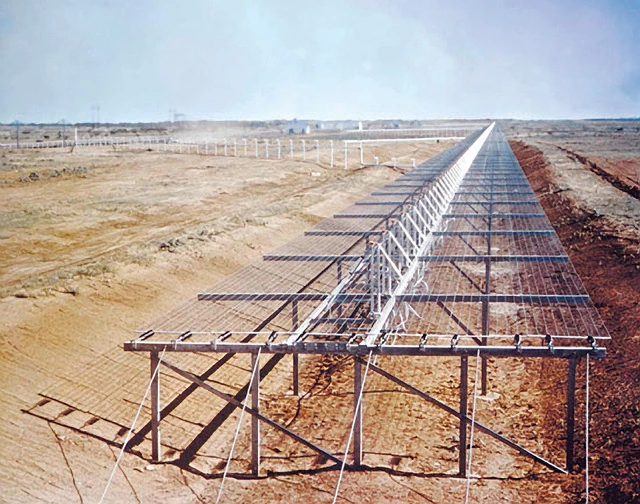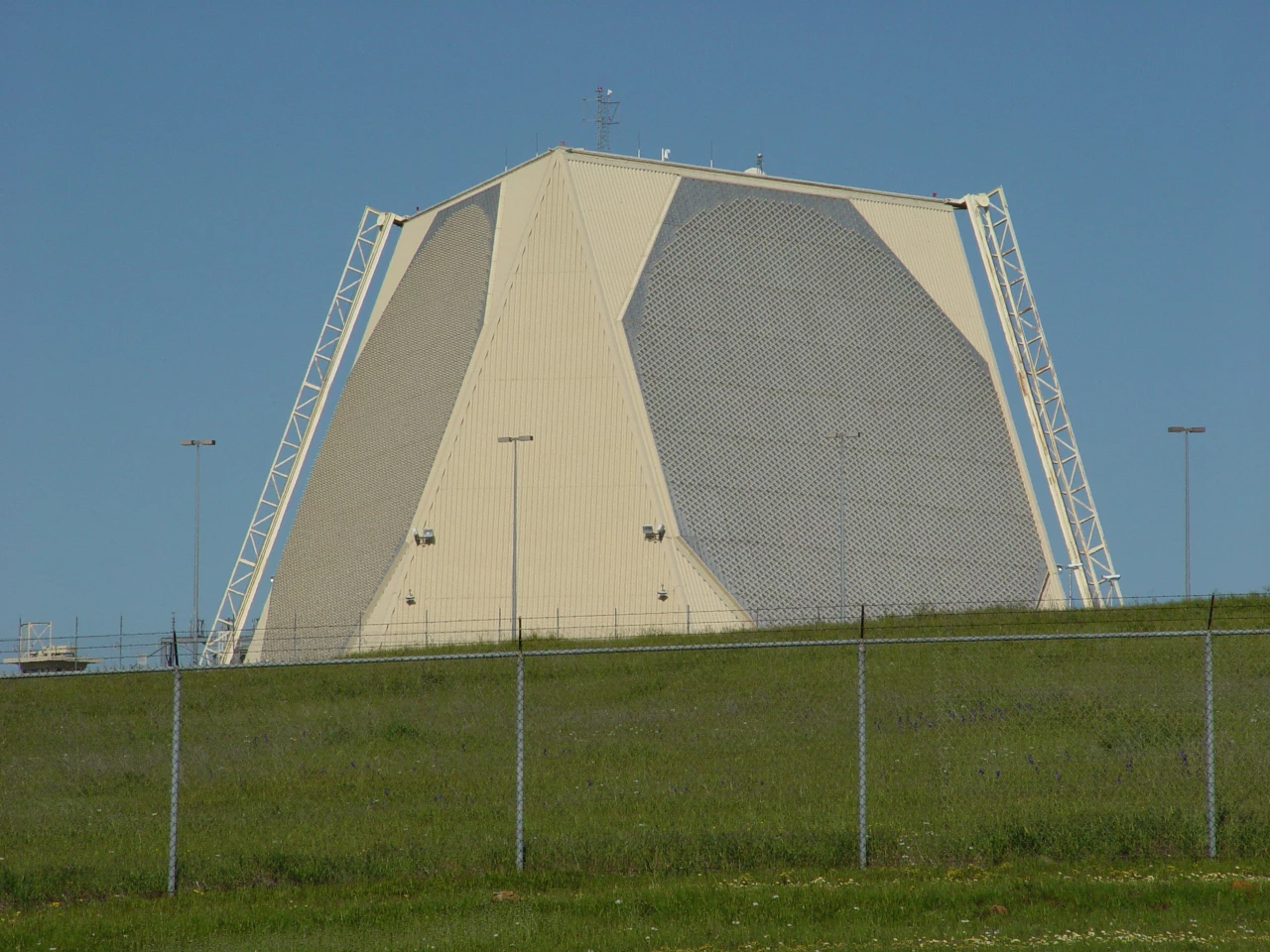In response to the rapidly increasing danger from space debris, a new system called the "Space Fence" has been under development. It would replace the 50-year-old Air Force Space Surveillance System (AFSSS) with a system of highly-sensitive phased array S-band tracking radars. Prototype "Space Fence" systems able to detect and track objects ten times smaller than those that can be detected by the AFSSS have been demonstrated by Raytheon and by Lockheed Martin. The USAF will now choose between construction and installation proposals submitted from both companies for building the new US$3.3 billion (est.) Space Fence, to be operational by 2017.
Space debris has evolved in recent years from a nuisance to a major operational problem to a looming disaster. The oldest piece of space junk still in orbit is the second US satellite ever launched, Vanguard I, measuring 16.5 cm (6.5 in) in diameter and weighing 1.47 kg (3.2 lb). In orbit since 1958, its present orbital altitude varies from 645 to 3,860 km (400 to 2,400 mi), with the apogee only falling by about 100 km (60 mi) in the past 54 years. Should Vanguard I collide with another object of equal or greater mass, the resulting event would be equivalent to the explosion of about 27 kg (60 lb) of TNT.
Factor in the countless other satellites, cast-off rocket stages, and other man-made objects that have been put into orbit in the decades since, and that, in a nutshell, is the space debris problem.

The present system that helps space missions avoid collisions with debris, the Air Force Space Surveillance System (AFSSS), was originally developed by the US Navy, and became operational in 1961 as NAVSPASUR. AFSSS cannot detect space debris smaller than about 75 cm (29.5 in) in size for two reasons. First, its VHF radar operates at a wavelength of about 140 cm (55 in), and total electromagnetic scattering from particles smaller than a wavelength (Rayleigh scattering) reduces as the fourth power of the object's size (for larger objects, you would expect the scattered radiation to depend on the square of the object's size).
In addition, AFSSS is a bistatic radar, meaning that a fan, rather than a focused beam, of radio waves is transmitted upward to scatter from objects in orbit. The result is that most of the transmitter's power is lost to space. These combined effects limit the AFSSS detection threshold to about 75 cm.
The Air Force's new Space Fence changes both of these limiting design features, and in so doing makes practical the detection of 10 cm (4 in)-sized objects. Although such objects can still deliver a substantial punch (about 40 grams (1.4 oz) of TNT), they can be effectively defended against using Whipple shields and related technology – a Whipple shield is essentially a standoff armor plate, designed to fragment and spread out the impact of colliding objects.

Lockheed Martin and Raytheon have been designing and developing prototypes for the new Space Fence since before 2009. They share the same basic design of a system of two or three S-band radars, described by Space Fence program officials as "some of the largest phased array radars ever built."
Indeed, requiring a dual path for developing operational prototypes of these radars was intended to offset the extreme challenge of the task. The challenge lay not only in the improved detection limit and control of such a large phased array radar antenna, but also in the dramatic increase in the number of tracked objects and their potential interactions.

The day the Space Fence becomes operational, more than 500,000 objects greater than a centimeter in size will have to be tracked, compared to the 22,000 or so being tracked by the AFSSS. The computational powered to predict collisions and near-misses among this many objects is on the order of a thousand times that required by the present system.
The General Accounting Organization expects the Space Fence to reach operational capability sometime in 2017, with the first radar to be based on Kwajalein Island in the Republic of the Marshall Islands.
Sources: US Department of Defense, Raytheon, Lockheed Martin via Defense Industry Daily
Update:
This article was modified on Nov 19, 2012 in response to a reader comment pointing out the AFSSS is a "bistatic" radar, not a "bistable" radar.





